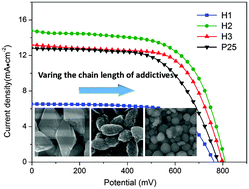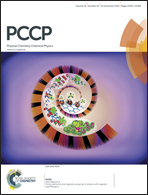Anatase TiO2 with nanopores for dye-sensitized solar cells†
Abstract
In this paper, a series of mesoporous anatase TiO2 crystals were prepared through a hydrothermal method. By using different carboxylic acids as solvents and additives, the morphology of the integral crystals as well as inner pores can be tuned by the chain length of the carboxylic acids. Further application of these anatase TiO2 crystals as the photoanode of DSCs resulted in an overall energy conversion efficiency of 7.55% because of their low electrical resistivity loss and improved light harvesting abilities.


 Please wait while we load your content...
Please wait while we load your content...